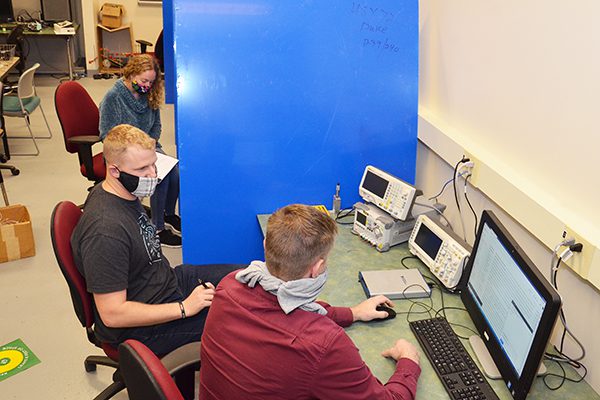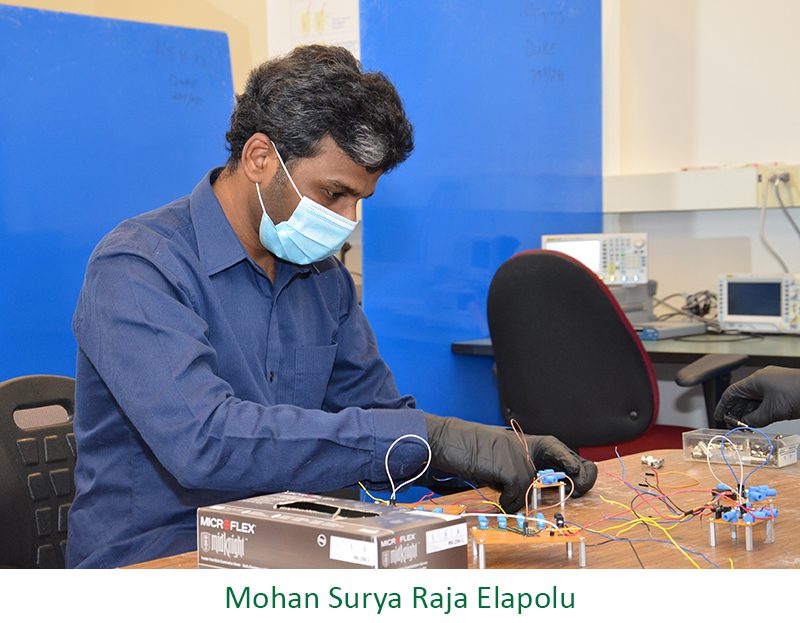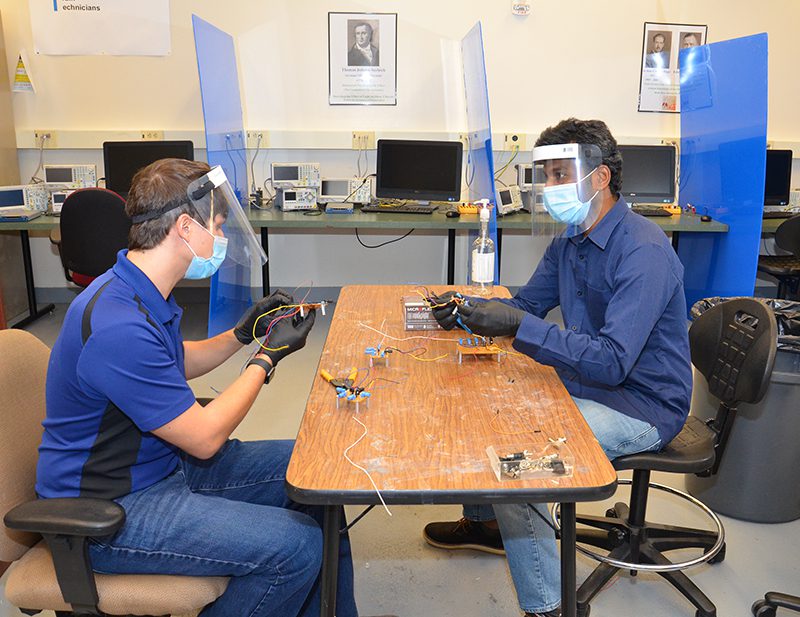Adapting Instrumentation Lab 3171L to Changing Times

As the lead graduate teaching assistant for Instrumentation Lab 3171L, Mohan Surya Raja Elapolu has had to do a lot of adapting in fall 2020, as the laboratory class has become a combination of online, in-class, video and hybrid learning.
A Mechanical Engineering and Engineering Science Ph.D. student whose research focuses on computational modeling, Elapolu has been the lead TA for 3171L since 2017. The laboratory course teaches students how to work with instrumentation equipment and how to process the data collected. For fall 2020, there were 13 sections of 3171L with a total of about 110 students.
“When we started the semester, everything was initially online,” Elapolu said. “The first challenge was to give the students the experience of what they were going to see in the lab. To do this, Dr. Hodgins (the lead instructor) made videos showing how to do the experiments.”
 At the beginning of October, students were given the option of continuing to work remotely, or coming in to campus to do their lab work.
At the beginning of October, students were given the option of continuing to work remotely, or coming in to campus to do their lab work.
To prepare for in-person instruction, Elapolu and his fellow teaching assistants had to make the laboratory safe for students, which meant putting up plastic barriers between bench stations and making available and defining rules for wearing personal protective equipment. When in-person lab classes began, the TAs determined assigned seating for the students and began new protocols of wiping down all surface areas after each class.
“The students have realized the situation is difficult and have been very patient with us,” Elapolu said. “Nobody wants to be in this situation, but the students’ understanding has made life easier.”
The support of the Mechanical Engineering and Engineering Science Department, particularly the lead instructor Dr. Garry Hodgins and Department Chair Dr. Harish Cherukuri, has also been beneficial in making the adapted 3171L a success. “They have been extremely supportive and have always done what is best for the safety of the students and quality of the course,” Elapolu said.
 Giving students the option of doing the lab work remotely or coming in to a safe in-person environment has been a lot of work, but it has been successful. Students are able to work in the situations they are most comfortable with.
Giving students the option of doing the lab work remotely or coming in to a safe in-person environment has been a lot of work, but it has been successful. Students are able to work in the situations they are most comfortable with.
“We thought the hybrid style would be very difficult to do well, but the results have been good,” Elapolu said. “The in-person and distance sections have been successful, and the students have been able to learn the material.”